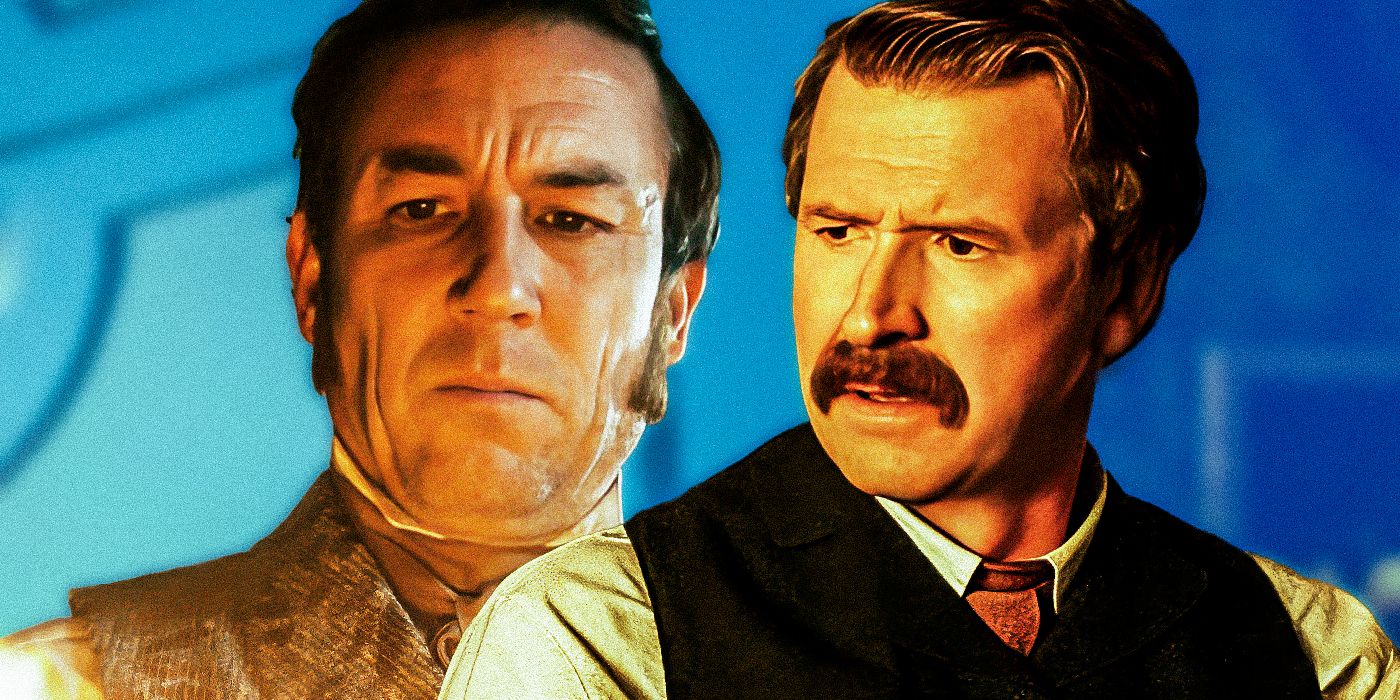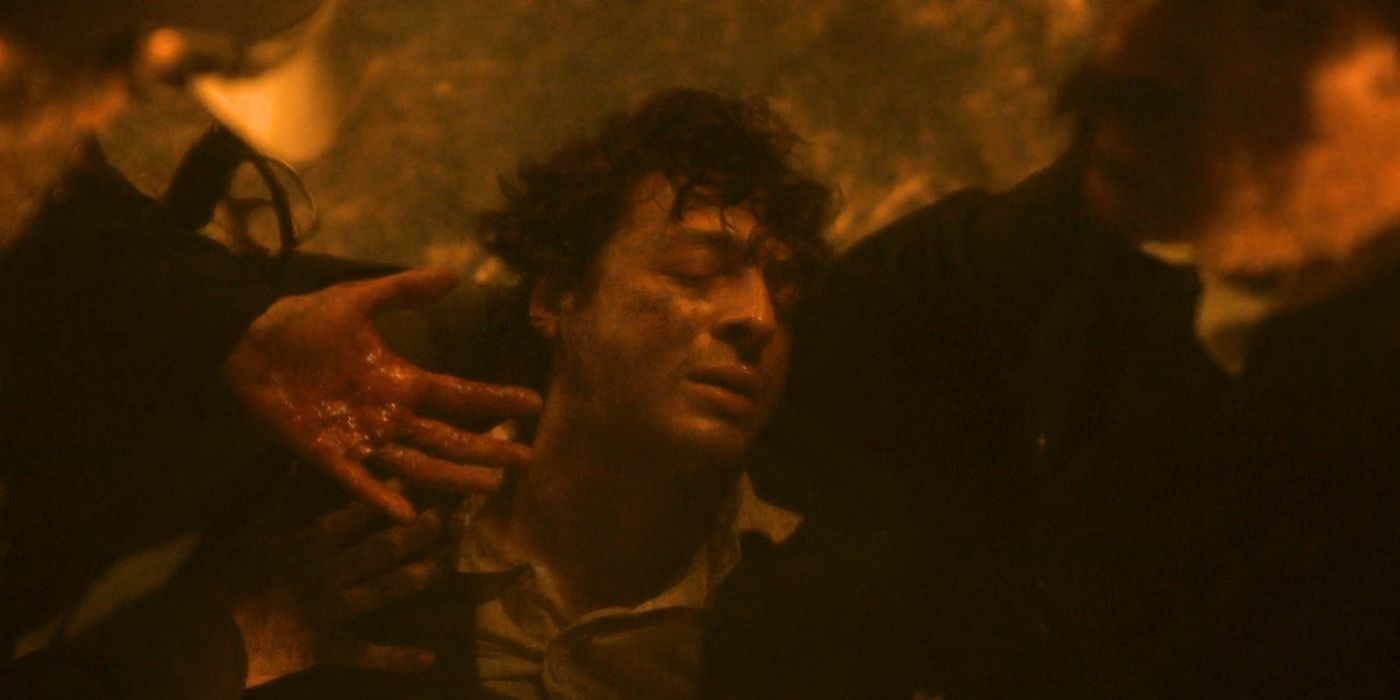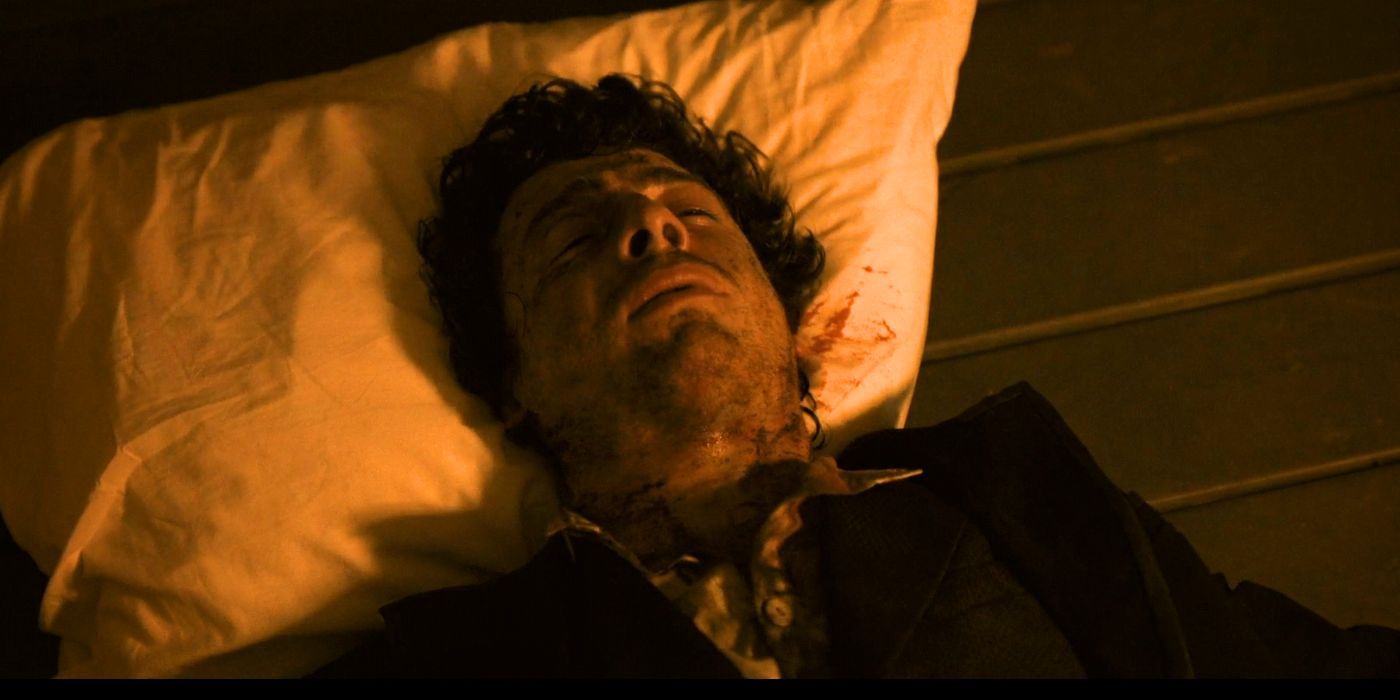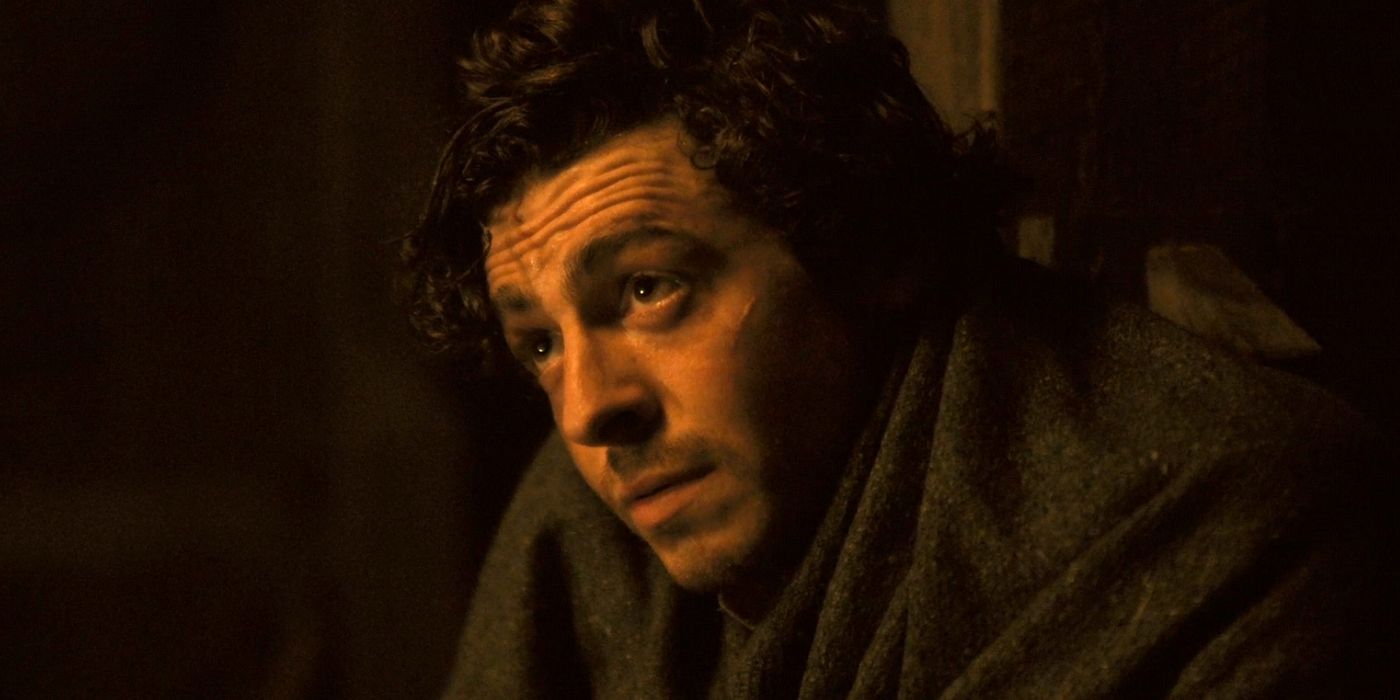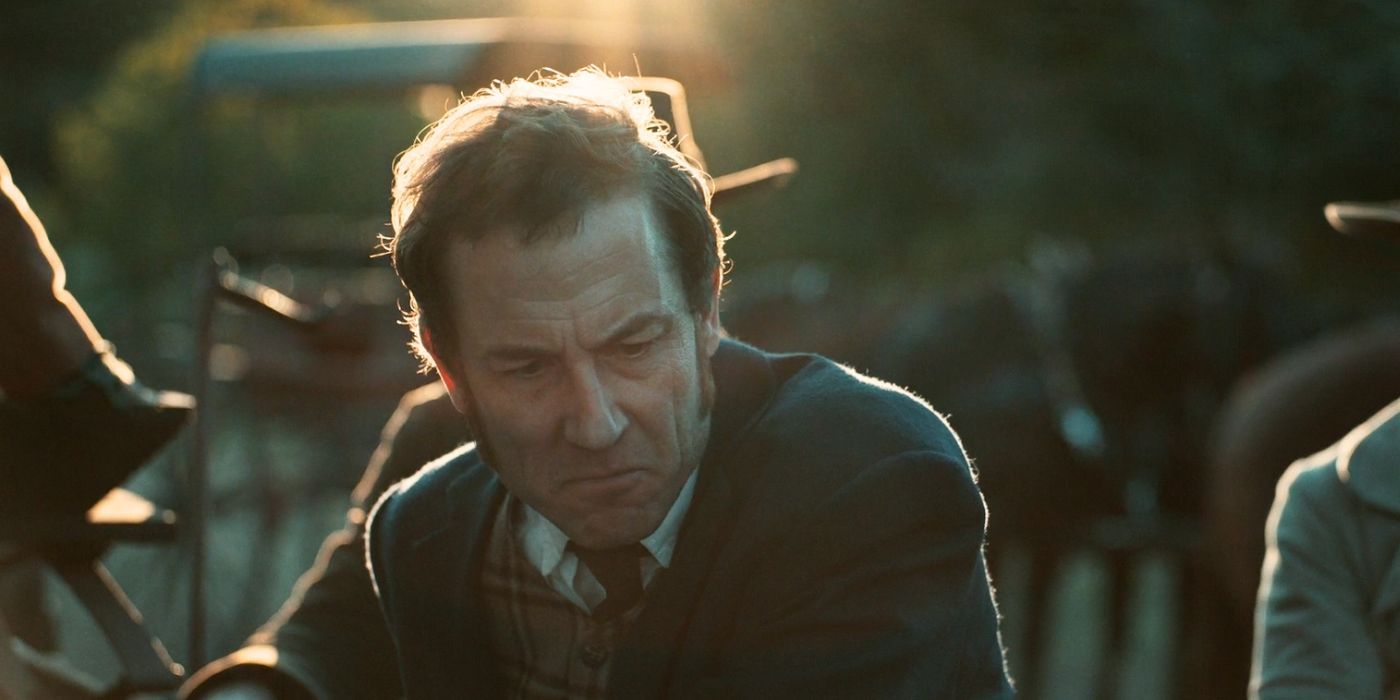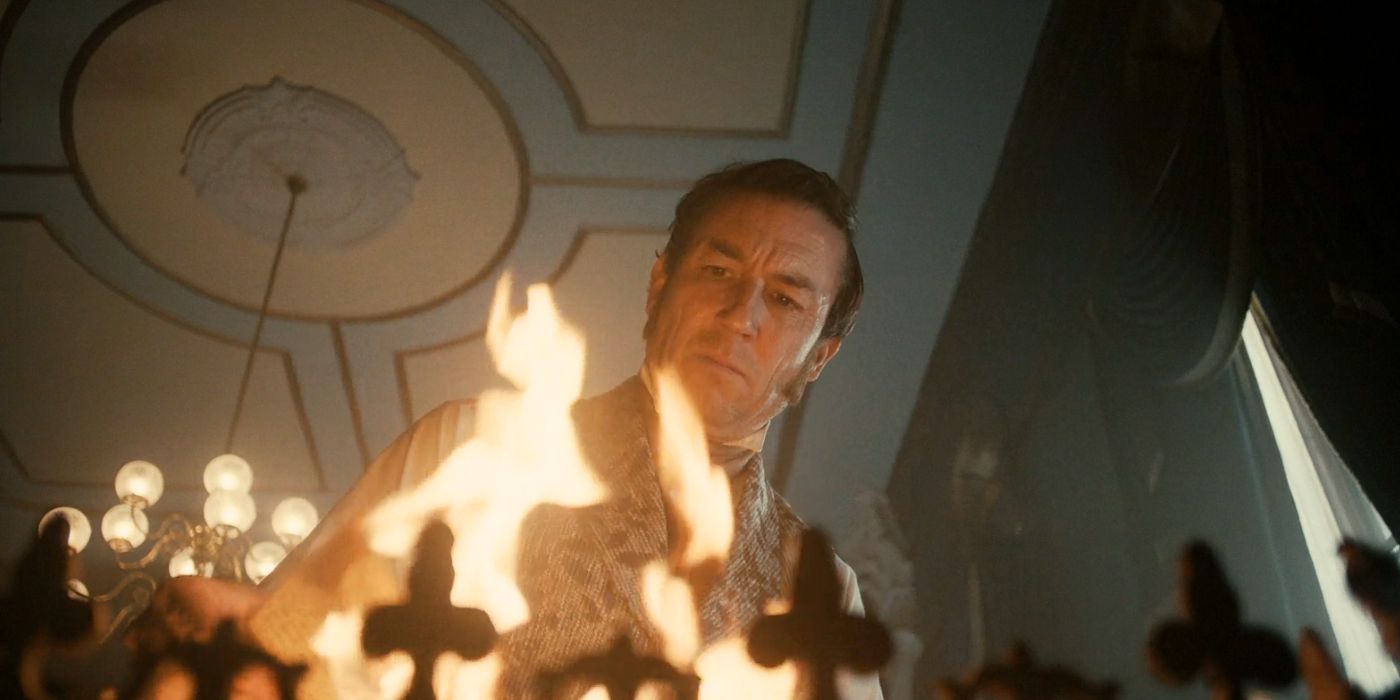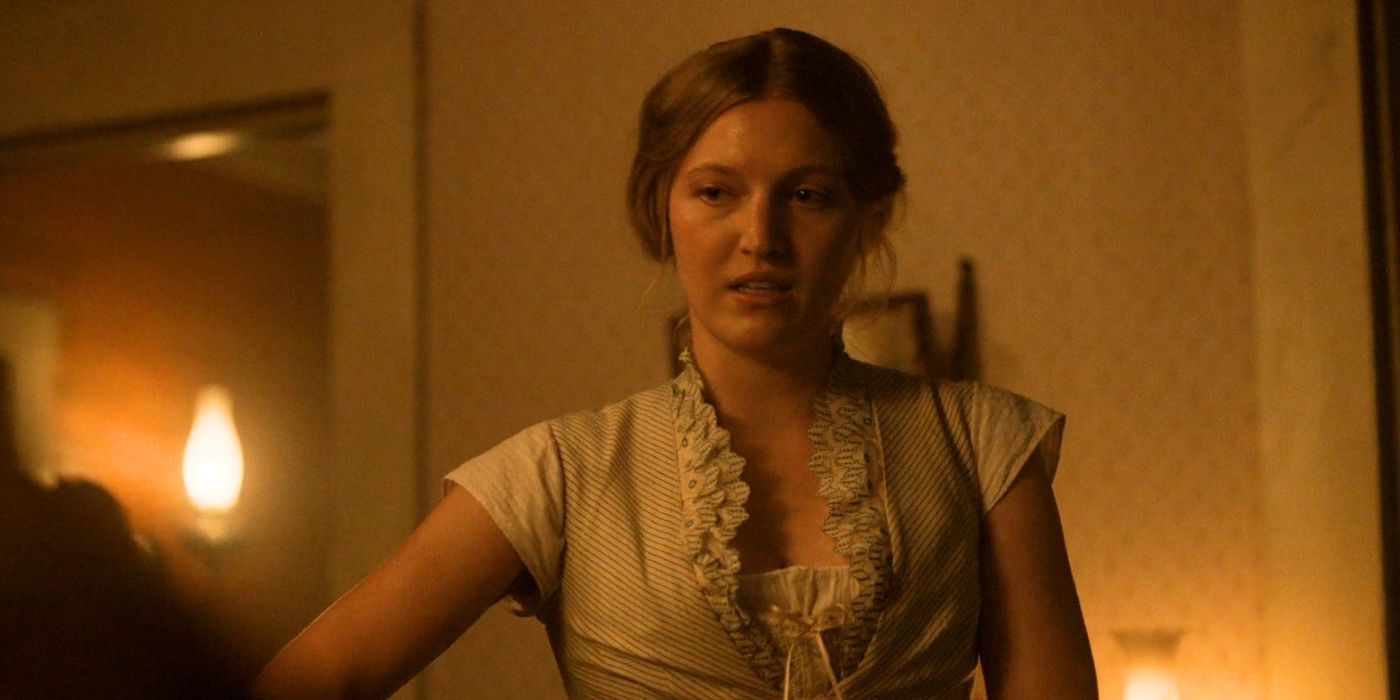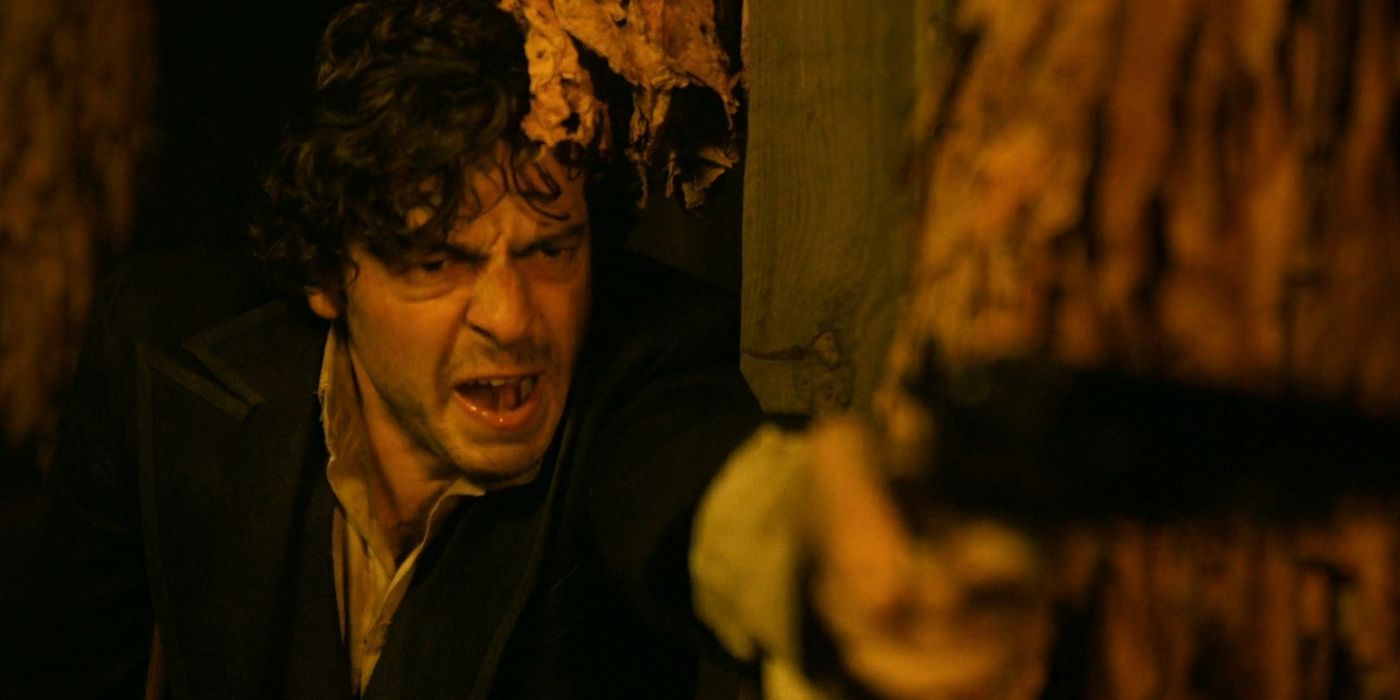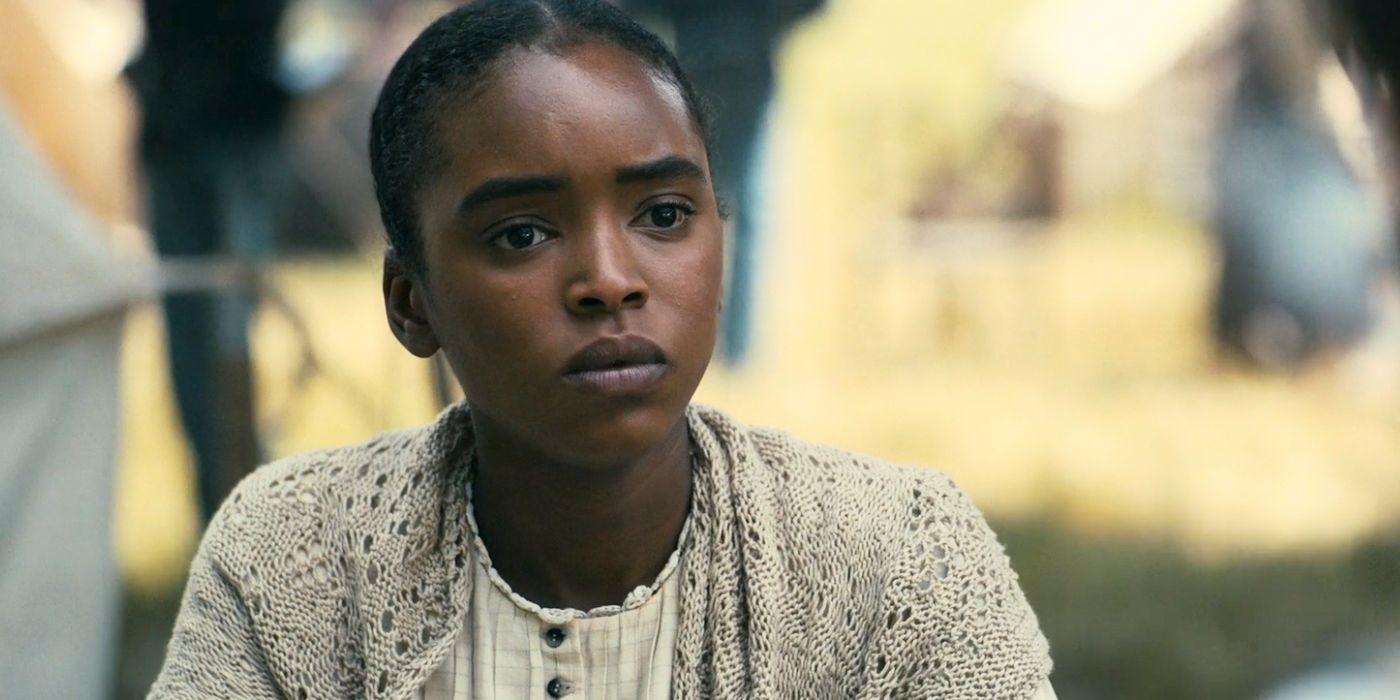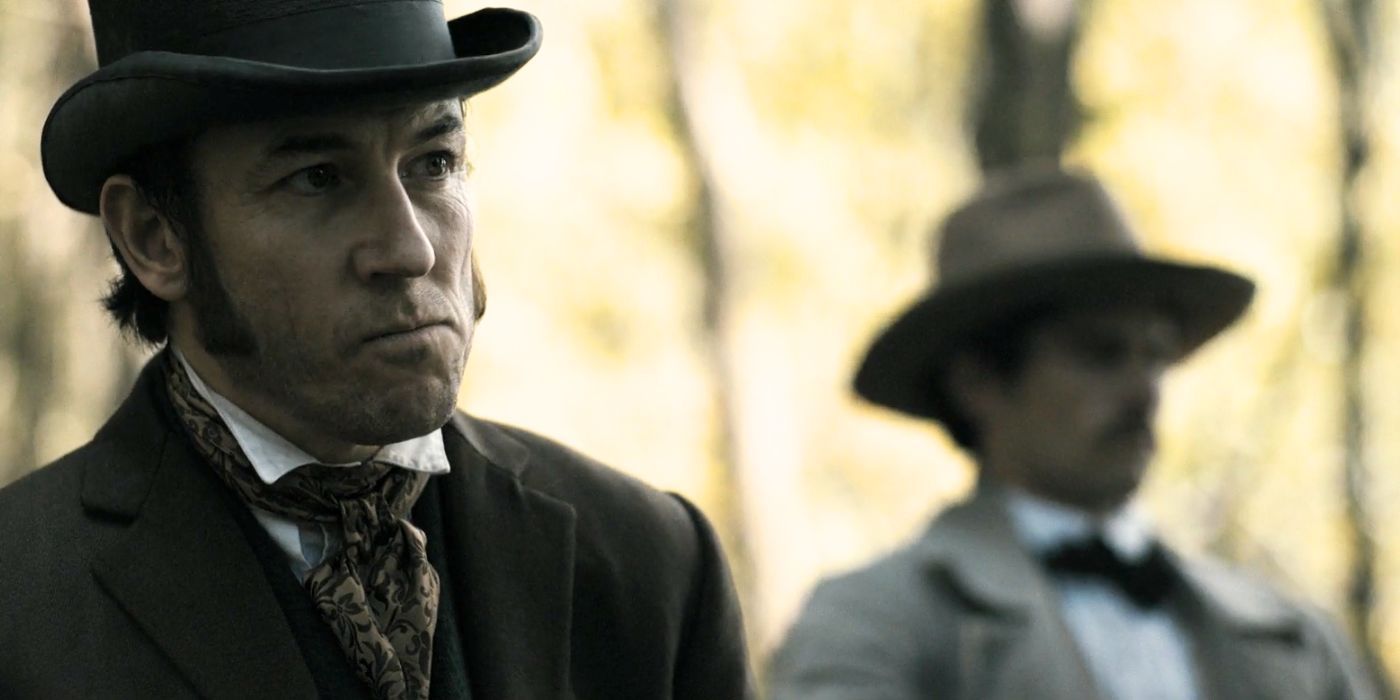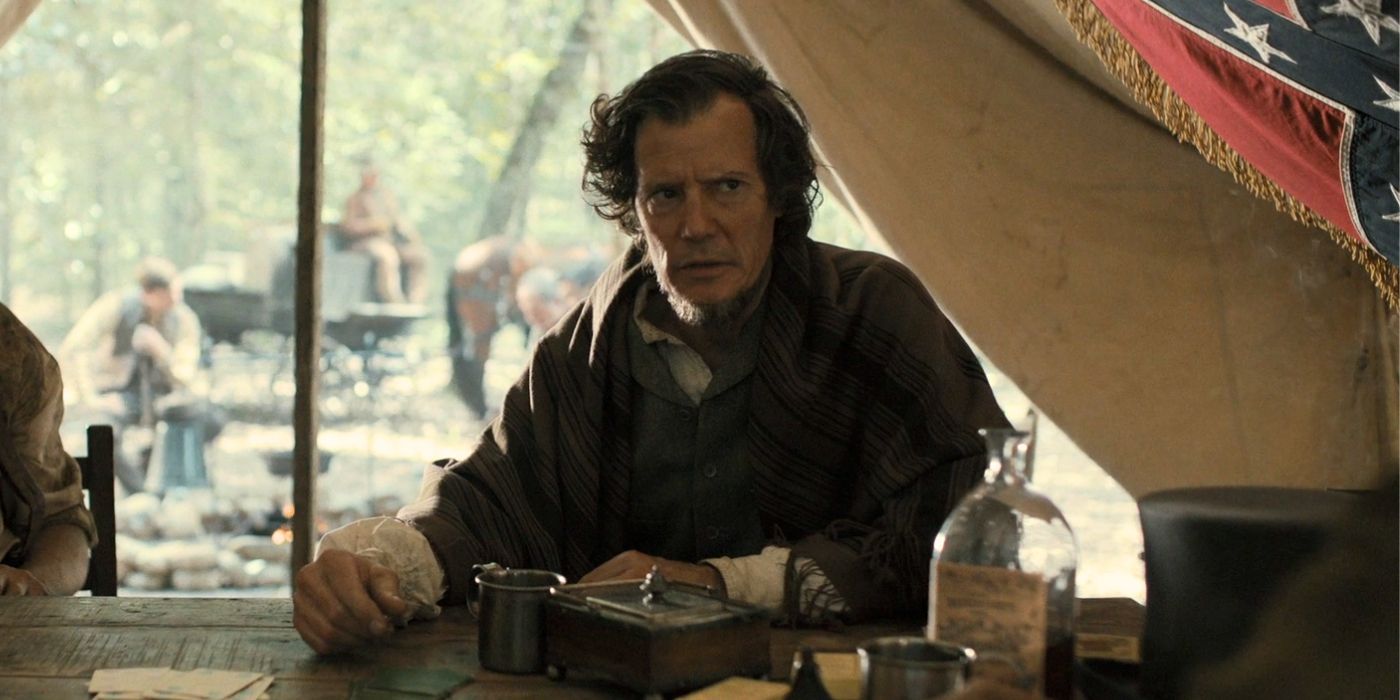Summary
- In Manhunt episode 6, Booth's death is depicted accurately, but with added drama for effect.
- The portrayal of Stanton's involvement in the Booth investigation is exaggerated for the show.
- Booth's final moments and interactions with Julia Garrett are fictionalized for a more emotional impact.
Manhunt episode 6 saw the dramatic conclusion of Secretary of War Edwin Stanton's fervent pursuit of John Wilkes Booth, and in a few instances historical accuracy was eschewed in favor of a more captivating narrative. After limiting Booth's screen time in the previous two episodes, Manhunt episode 6 went into great detail about the final confrontation between Booth and Union soldiers at the Garrett farm, which led to Booth's death. While the larger story points stick to the truth, creator Monica Beletsky changed some details or provided context that may or may not be accurate in service of the drama.
Manhunt episode 6 stuck to the formula laid out by the previous episodes. It kept the greater story intact while moving timelines and expanding character roles to deliver not only a more compelling narrative, but a more complete look at the real-world effects of Booth's assassination of Abraham Lincoln. In addition to addressing Booth's capture and death, Manhunt episode 6 began to set the stage for the series' final episode, which will deal with the consequences for Booth's conspirators, the larger Confederate conspiracy that Edwin Stanton is pursuing, and how America moves forward without Lincoln.
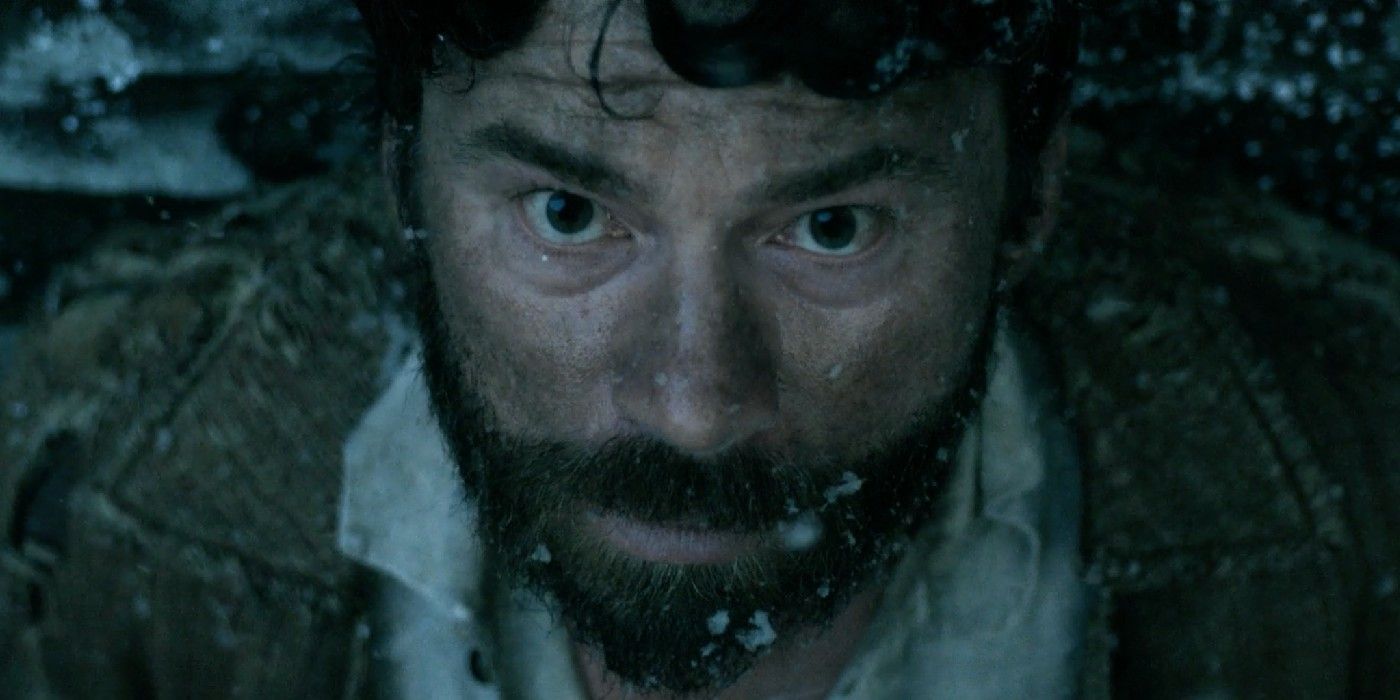
The True Story Of Manhunt's Boston Corbett & His Role In John Wilkes Booth's Capture
Manhunt episode 5 briefly introduces a new, mysterious character who will play a major role in the capture of John Wilkes Booth: Boston Corbett.10 John Wilkes Booth Wasn’t Shot In The Head
While it's played as a parallel to Lincoln, it's not accurate.
The circumstances of Booth's death are depicted fairly accurately in Manhunt episode 6. Booth was indeed trapped in a barn, he did refuse to surrender, and he did remain in the barn after Herold surrendered. While going back and forth with Union soldiers, Booth was shot by Sgt. Thomas "Boston" Corbett, who had disobeyed orders in firing, as it was the intention of Lt. Col. Everton Conger, who led the operation, to take Booth alive.
However, Booth was not shot in the back of the head "just like Lincoln", as the soldier who carries him out of the barn declares. Booth was shot in the neck, with the bullet breaking three vertebrae, severing his spinal cord and paralyzing him. He was dragged back to the porch of the Garrett house, as depicted in the show, and ultimately died of his wounds. While his confused, seemingly random final words are indicative of a brain injury, that isn't how the incident actually played out.
9 Booth Died Several Hours Later
In the show, he dies after only a few minutes.
In Manhunt episode 6, Booth is given a simultaneously poetic and grisly death, as he is tended to by Julia Garrett, the daughter of the tobacco farmer who owned the property. He delivers only a few slurred words to her before quickly passing away, choking on his own blood. In reality, Booth lingered for another three hours after being shot, and delivered a few more coherent phrases before succumbing to his wounds.
8 Booth’s Final Words Were Slightly Different
The show also provided backstory to Booth's final words.
While locked in the Garrett barn, Booth attempts to reassure his panicking companion of their safety by relaying stories from his childhood. He specifically mentions a story in which his father called him useless, and one in which his mother did a palm reading and told him he had beautiful hands that were meant for something great. There is no way to know what Booth and Herold said to each other while unknowingly awaiting their fate in that barn, but the stories that Booth tells in Manhunt episode 6 provide some more clarity to his actual final words.
In the show, Booth only manages to get out three phrases. The first is him asking for his mother while looking at Julia Garrett, either confusing her with his mother or simply asking for his real mother to come to him. He then tells her "Don't look at my hands." It's a clear reference to the story he recently told Herold about his mother's palm reading, and the implication is that he finally realized that her prediction that his hands would do something great was not correct.
Finally, he mumbles the word "useless" three times, which is a callback to the story he told about his father. Per the American Battlefield Trust, Booth's final words were as depicted in the show: "Useless, useless." It was supposedly in reaction to him asking the soldiers to hold up his hands so he could see them. Prior to that, he told them to tell his mother that he died for his country.
Creator Monica Beletsky took the real final words of Booth and gave them added context in order to provide a deeper understanding of Booth as a man. Although he's vilified as one of the most infamous monsters in American history, Manhunt has explored what exactly drove him to commit the heinous murder of Abraham Lincoln. An exploration of his childhood absolutely plays a role in how he grew into the radical Confederate sympathizer he came to be, so while the final words in the show may not be entirely accurate, they're important to the show.
7 Stanton Didn’t Go To The Garrett Farm
Stanton was not as hands-on as he is depicted.
Manhunt is predicated on the cat-and-mouse game between Tobias Menzies' Edwin Stanton and Anthony Boyle's John Wilkes Booth. The intrigue is driven by Stanton's pursuit of the man who killed his dear friend, Abraham Lincoln, and his pursuit takes him all over the Northeast and into Canada following leads. Along the way, he discovers a greater Confederate conspiracy which leads to intense moments like an attempt on his life, a gunpoint showdown with George Sanders and a dogged pursuit through Maryland and Virginia hot on Booth's trail.
In reality, Edwin Stanton was in fact in charge of the Booth investigation, but he did so from behind a desk. Stanton was a lawyer before he entered politics, and as Secretary of War in the newly reunified Union he had monumental tasks to handle in regard to demilitarization and Reconstruction. He simply did not have the capacity to physically chase down leads and hunt Booth as he is shown doing in Manhunt, meaning he never made it to the Garrett farm.
6 Stanton Didn't Tear Pages Out Of Booth’s Diary
Pages are missing, but it's impossible to verify who did it.
Perhaps the most intriguing scene in Manhunt episode 6 comes toward the end, when Stanton leafs through Booth's diary before tearing out several pages and burning them. It's heavily implied by the conversation with his son right before the burning that there may be information in the diary that Stanton never wanted to see the light of day. The scene is intentionally vague, as it addresses a real-life conspiracy theory around Stanton and Booth's diary.
Booth's real diary is in fact missing multiple pages, but there's no way to ever know who exactly tore them out, or why. Booth's diary was taken off his body the night he was killed, and from there it passed through the hands of Everton Conger before it made its way to Agent Lafayette Baker and ultimately Stanton. The conspiracy theory states that Stanton tore the pages out because he was implicated somehow, either as a conspirator in the assassination himself or in Booth's assertion that he only killed Lincoln in response to Stanton's own unverified attempt on Jefferson Davis.
Given that Manhunt already showed several flashback scenes related to Lincoln ordering Stanton to assassinate Davis, it's likely that is what the implication was. The more haunting notion is that Stanton tore the pages out in an effort to conceal the fact that he himself played a part in the murder of Lincoln. Knowing that the two men were friends and that Stanton had a long track record of trying to preserve Lincoln's vision for Reconstruction, that notion seems particularly far-fetched.
5 Julia Garrett Didn’t Tend To Booth
Garrett's son Jack, a former Confederate soldier, dealt with Booth.
Julia Garrett, the daughter of Richard Garrett the tobacco farmer, is given somewhat of a significant role in Manhunt episode 6. She is responsible for sending Booth and Herold out to the barn, as she believes her father will question her honor if Booth stays in her room overnight. She is also the last person Booth sees or speaks to, as she tends him in his final moments on the front porch of the Garrett house.
In reality, Julia Garrett didn't exist. It was Richard Garrett's son Jack, a former Confederate soldier, who dealt with Booth, according to the National Parks Service. Jack sent Booth and Herold into the barn suspecting that they might be horse thieves after seeing Booth panic at the mention of Union soldiers. The only people present for Booth's death were the soldiers guarding him.
4 Booth Didn’t Attempt To Clear David Herold
Booth cursed him as a coward.
Manhunt episode 6 shows John Wilkes Booth telling the Union soldiers that his companion, David Herold, didn't actually do anything wrong when Herold surrenders. It's a bit of a last-second face turn for Booth, as he had previously criticized Herold for considering surrender. His words fall on deaf ears, and Herold is taken captive by the soldiers in the moment.
In reality, Booth called Herold a coward when he surrendered after the barn was lit on fire and Herold realized the futility of resistance. This is echoed in Manhunt episode 6 prior to their capture when Booth calls Herold out for abandoning Lewis Powell in his assassination attempt on William Seward. While it was a humanizing moment for the Booth character in Manhunt, the real John Wilkes Booth remained defiant to the end.
3 Stanton Never Pursued Mary Simms As A “Star Witness”
Simms did eventually testify, but Stanton didn't seek her out personally.
As mentioned, Edwin Stanton didn't do much actual investigating during the hunt for Booth, and that continued in the period after Booth was captured. Therefore, he never sought out Mary Simms at the freedman's settlement in Arlington, Virginia. More importantly than Stanton never leaving Washington is the fact that the real Mary Simms would not have been able to accomplish all that Stanton wanted her to in Manhunt.
The real Mary Simms left Dr. Samuel Mudd in 1964, well before Booth ever sought him out for medical attention following the assassination. Therefore, she never had an encounter with John Wilkes Booth, and couldn't have possibly connected Mudd to Surratt or Booth. However, the real Mary Simms did testify at Samuel Mudd's trial, as she was a witness to his criminal activity as a Confederate agent.
2 Stanton Didn’t Immediately Get Rid Of Booth’s Body
The show captures the nature of Stanton's wishes.
In Manhunt episode 6, Stanton details exactly what he wants to happen to Booth's body. He asks that Booth's body be dumped in a random, unknown body of water, specifically so there can be no place for people to honor his memory. While he understands this could lead to people questioning if he's really dead or not, he plans to have a coroner document the body before it is disposed of for the sake of verification.
According to Lincoln researcher Roger J. Norton, the real Edwin Stanton demanded that Booth's body be buried in the Old Penitentiary of the Washington Arsenal. Booth was buried beneath the prison floor before being moved to a different part of the prison in 1867. In 1869, his remains were exhumed and released to the Booth family, who had him placed in an unmarked grave in the Booth family plot in Baltimore. The real Stanton wanted to be sure that Booth could not receive honor and admiration, and Manhunt captures the essence of what he wanted, if not the precise details.
1 Stanton Didn’t Tell The Press Jefferson Davis Was Captured In A Dress
He did help perpetuate the myth, though.
According to AmericanHeritage.com, Jefferson Davis wasn't captured in a dress. In reality, he was wearing a raglan, or overcoat which, while a unisex garment, did belong to his wife. The detail passed along to Stanton was that Davis was captured wearing his wife's clothing, which is what he sent to the press. From there, the cartoonists and rumor-mongers took over, and soon the country believed that Davis was captured wearing a hoop skirt.
By the time Stanton finally received the clothing Davis was captured in for his own personal collection, he realized that it was nothing so incriminating as a dress. He chose to hide the garment away, instead letting the rumors about Davis being captured in a dress continue unabated. While he may not have been directly responsible for the rumor as depicted in Manhunt episode 6, the real Edwin Stanton had an opportunity to clarify and chose not to.
Source: American Battlefield Trust, AmericanHeritage.com, National Parks Service
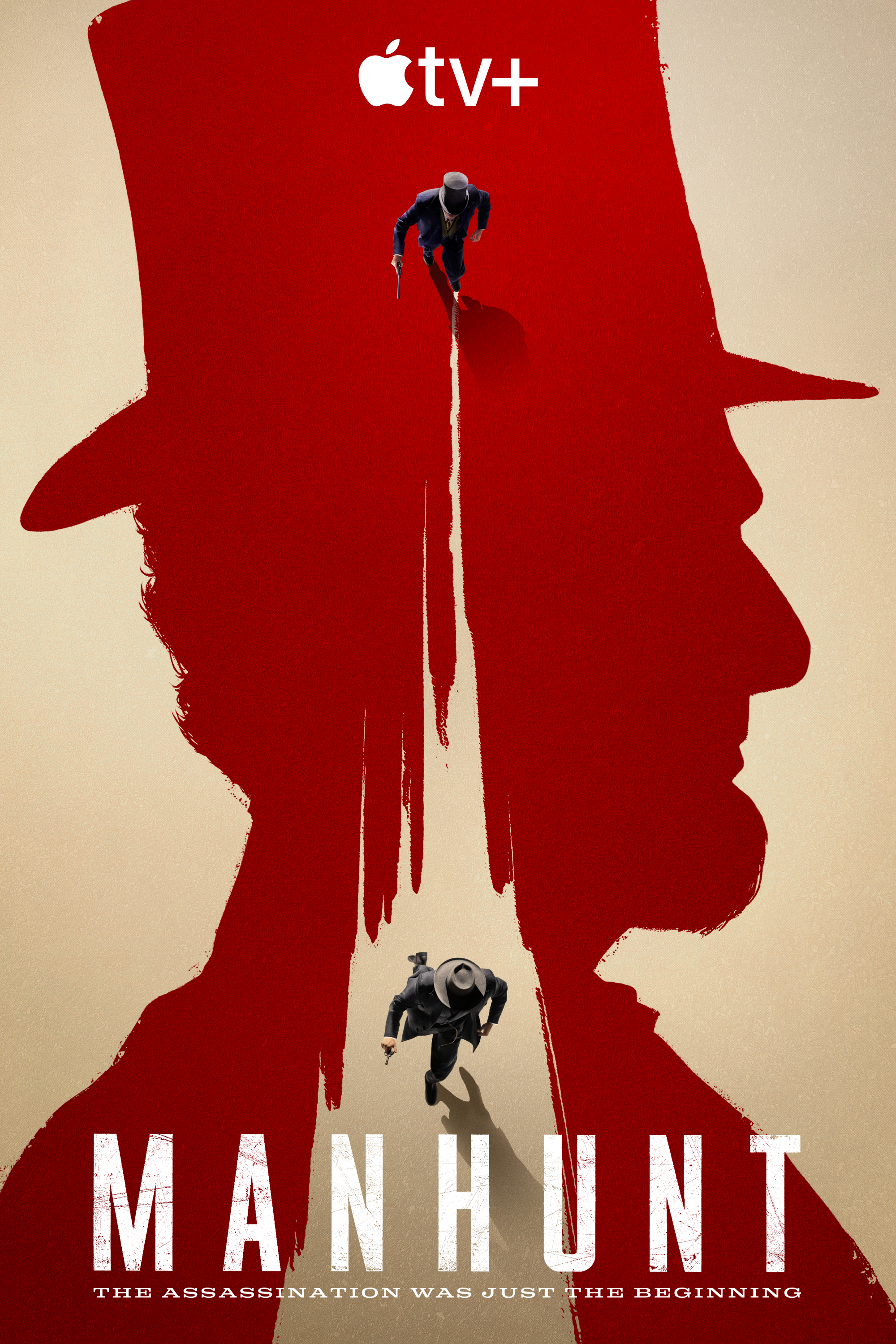
Manhunt (2024)
Mahunt is an AppleTV+ mini-series focusing on the hunt for John Wilkes Booth after he assassinates Abraham Lincoln. Anthony Boyle stars as John Wilkes Booth alongside Tobias Menzies, Lovie Simone, and Will Harrison in the series created by Monica Beletsky.

